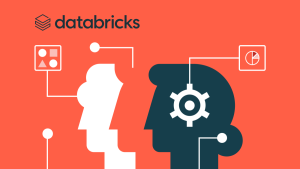Demand for AI is driving data center water consumption sky high

The demand for AI is fueling a data center boom. This surge leads to increased water consumption for cooling equipment in these centers.
Water consumption in data centers has spiked, raising sustainability concerns, especially in regions with water scarcity.
Rising Demand for AI and Data Centers
The growth in AI applications has significantly increased the demand for data centers. These facilities house the powerful computers needed to run AI systems, leading to a surge in water consumption for cooling purposes.
For instance, data centers in Virginia, which has the highest concentration globally, saw their water usage spike from 1.13 billion gallons in 2019 to 1.85 billion gallons in 2023. This trend is evident worldwide, raising sustainability concerns.
Water Usage in Data Centers
Water is vital for cooling the massive computing equipment in data centers. This cooling process is essential to maintain optimal operating temperatures and prevent overheating that could damage the equipment.
Despite efforts to recycle water, a significant amount is used for humidity control and evaporates during the process. This is particularly crucial in drier regions where non-humidified air can lead to static electricity, harmful to computer systems.
Impact on Water-Stressed Areas
Many data centers are located in regions already facing water scarcity.
Microsoft reported that in 2023, 42% of its water consumption came from areas experiencing water stress. Similarly, Google disclosed that 15% of its freshwater withdrawals were from regions with high water scarcity.
This exacerbates the water shortage issues in these areas, leading to concerns about the long-term sustainability of such practices.
Efforts to Mitigate Water Consumption
To address these concerns, companies are exploring alternative cooling methods and strategies to reduce water usage.
Some data centers are adopting air cooling and liquid cooling systems that use less water. These technologies aim to improve efficiency and reduce the environmental impact of data centers.
However, the adoption of these new technologies is gradual, and the majority of data centers still rely heavily on water-based cooling systems.
Future Outlook and Challenges
The increasing reliance on AI and cloud computing means that the demand for data centers will continue to grow.
Balancing the need for technological advancement with environmental sustainability will be a significant challenge for the industry.
Innovations in cooling technologies and improved water management practices are essential to address the growing water consumption in data centers.
Government and Industry Responses
Governments and regulatory bodies are becoming more aware of the environmental impact of data centers.
There are calls for stricter regulations and policies to ensure sustainable water usage in these facilities.
The industry is also responding with initiatives aimed at improving water efficiency and minimizing the environmental footprint of data centers.
Conclusion
Balancing AI advancements with sustainable practices is crucial. The rapid growth of AI-driven technology highlights the need for innovative and eco-friendly solutions in data centers.
Efforts from both industry and government are essential to reduce water consumption and ensure the sustainability of resources.
As we advance technologically, it is vital to prioritize sustainability to protect our planet for future generations.
Balancing AI advancements with sustainable practices is crucial. The rapid growth of AI-driven technology highlights the need for innovative and eco-friendly solutions in data centers.
Efforts from both industry and government are essential to reduce water consumption and ensure the sustainability of resources.
As we advance technologically, it is vital to prioritize sustainability to protect our planet for future generations.





